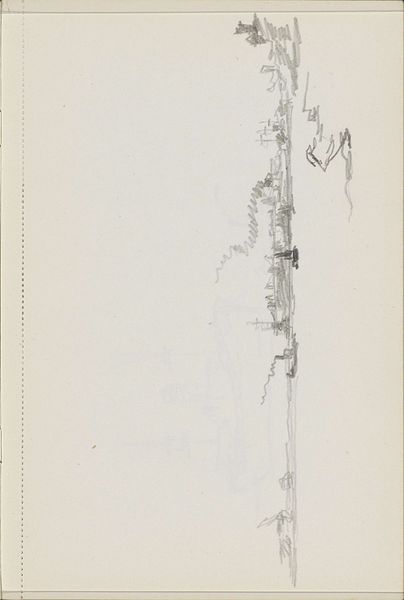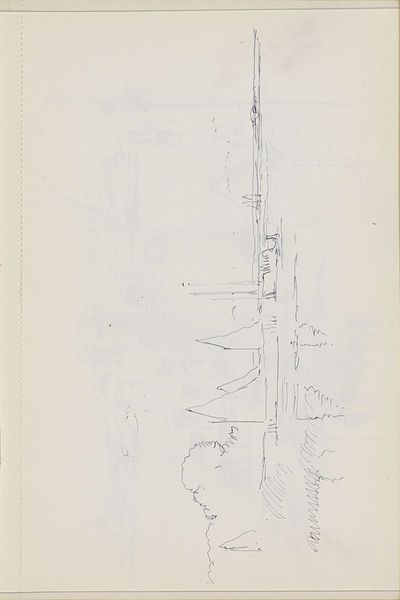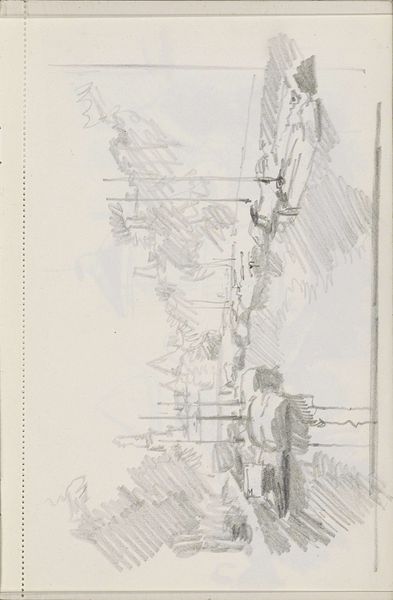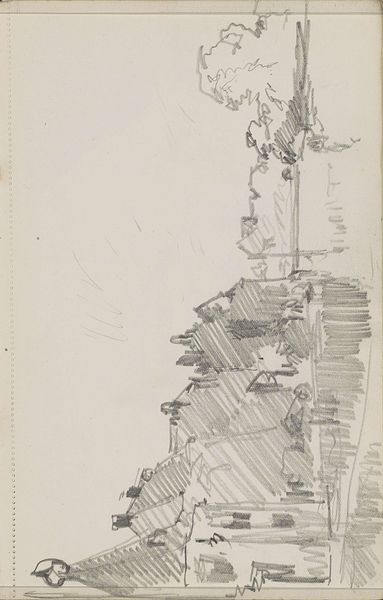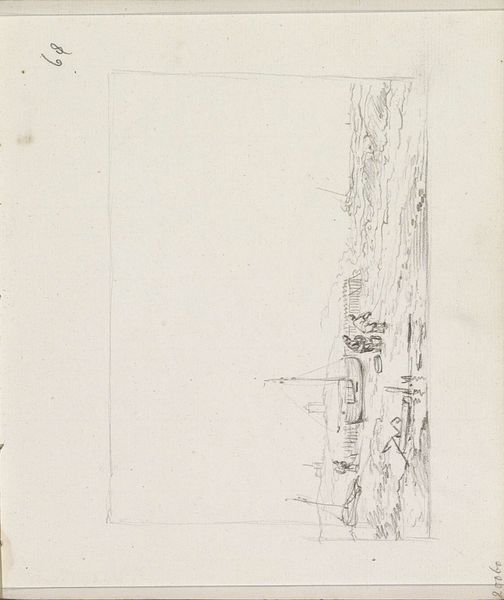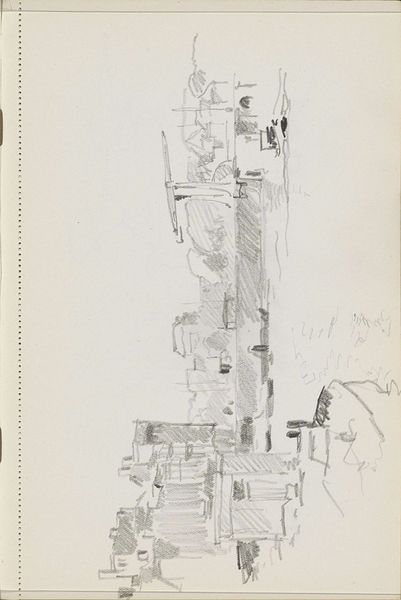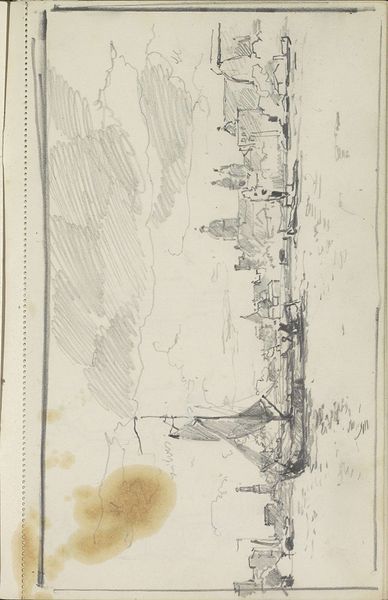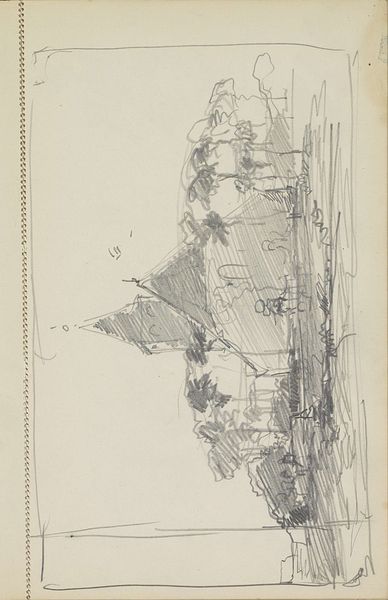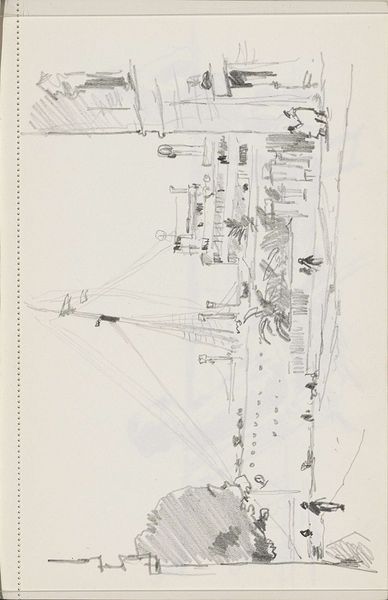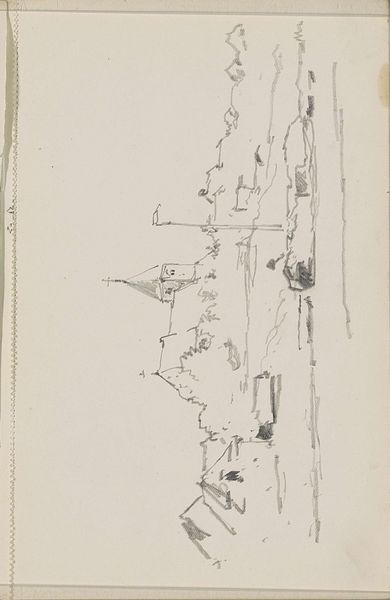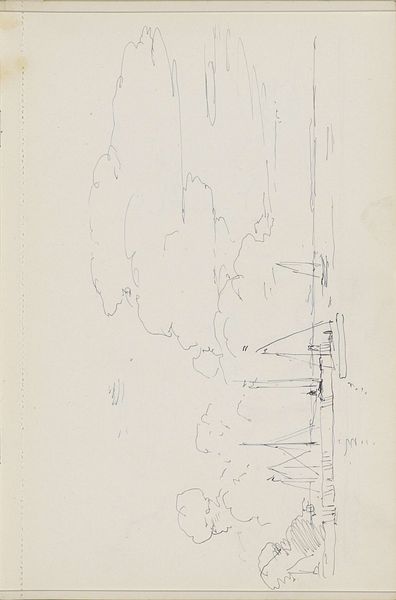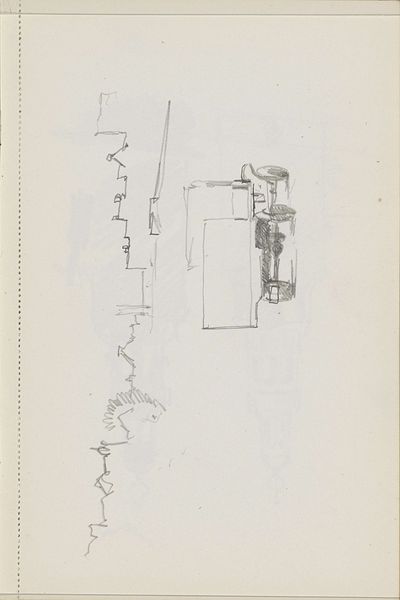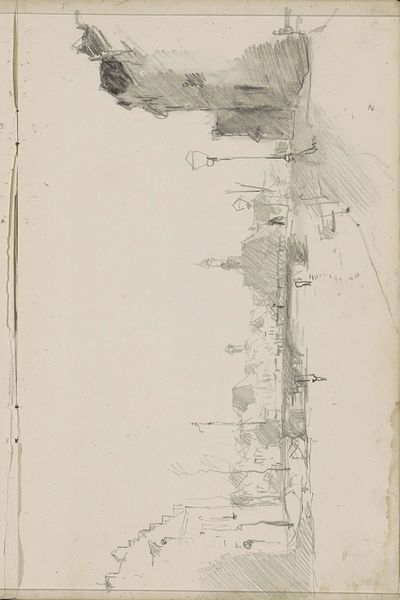
Copyright: Rijks Museum: Open Domain
Art Historian: Here at the Rijksmuseum, we're looking at Cornelis Vreedenburgh’s “Schepen bij een kustlijn,” or "Ships by a Coastline," created around 1936. Curator: It strikes me as such an ephemeral thing. A pencil sketch on what looks like simple paper…Almost discarded, quickly rendered, capturing a transient moment. Art Historian: Exactly! Vreedenburgh, though working in the 20th century, really taps into that tradition of maritime symbolism – ships representing journeys, transitions. That coast signifies a boundary, perhaps between known and unknown. This drawing encapsulates a pivotal point. Curator: And made with such economical means. A pencil line becomes a ship, a cluster of graphite transforms into a cityscape. It’s incredible how little material he uses to suggest so much activity, and even the division of labor related to shipbuilding and port life. You have to think about the materials, their access... Art Historian: But isn't that paring down itself symbolic? He is choosing what to render to indicate motion and progress. Like how the unfinished sketch suggests an open narrative, or destiny yet unwritten. Even the paper itself suggests transience, that the drawing can be added, taken away from. Curator: That's one perspective. Another might be the sheer disposability that cheap paper allowed. Was Vreedenburgh thinking of longevity here, or just capturing the light hitting the water right then and there, in a preliminary manner for future work. Art Historian: I do see your point... there’s an interesting tension, then, between that planned intent for a possible painting. Yet there is undeniable beauty even in what feels so effortless here, that initial stage as an important document too. Curator: Absolutely, it gets you pondering the circumstances surrounding it, doesn't it? What kind of studio might he have worked in? Did he value sketches as their own form, or just use them towards realizing final art product for financial gain? Art Historian: Examining those working processes really open up the symbolic meaning of place here, making that idea of landscape itself as something socially constructed, made up not only of geographical borders, but societal relationships. Curator: It really shows you the layers, doesn't it? More than just "ships on the coastline.”
Comments
No comments
Be the first to comment and join the conversation on the ultimate creative platform.
